Today’s Current Affairs: 25th aug 2023 for UPSC IAS exams, State PSC exams, SSC CGL, State SSC, RRB, Railways, Banking Exam & IBPS, etc
Table of Contents
S-400 Air Defence Missile System:
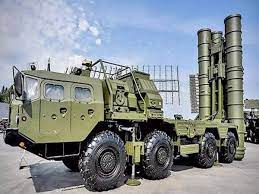
Ukraine recently destroyed a Russian S-400 anti-aircraft system on the Crimean peninsula, which Russia annexed in 2014.
S-400 Air Defence Missile System:
- The S-400 Triumf (NATO: SA-21 Growler) is a mobile, surface-to-air missile system.
- It is one of the world’s most advanced air defence systems that can simultaneously track numerous incoming objects.
- It was developed by the Almaz Central Design Bureau of Russia.
- The system entered service in April 2007, and the first S-400 was deployed in combat in August 2007.
- India signed a US$ 5.5 billion deal with Russia in October 2018 to acquire five S-400 systems.
- It is equipped with four different missiles that can engage enemy aircraft, ballistic missiles, and AWACS planes at 400 km and 250 km, medium-range at 120 km, and short-range at 40 km.
- The system can simultaneously engage 36 targets.
- The system is a large complex of radars, control systems and different types of missiles.
- The highly automated S-400 has radars that can pick up an incoming object up to 1,000 kilometres away, track several dozen incoming objects simultaneously and distribute the targets to appropriate missile systems.
Pench Tiger Reserve : Introduced Cycle Safaris
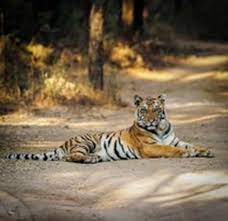
The Pench Tiger Reserve recently introduced cycle safaris, allowing visitors to experience the beauty of nature on wheels.
- Pench Tiger Reserve located in the southern reaches of the Satpura hills in the Seoni and Chhindwara districts in Madhya Pradesh and continues in Nagpur district in Maharashtra as a separate Sanctuary.
- It is named after the Pench River, which flows from north to south through the Reserve.
- It comprises of the Indira Priyadarshini Pench National Park, the Pench Mowgli Sanctuary and a buffer.
- The area of the Pench Tiger Reserve and the surrounding area is the real story area of Rudyard Kipling’s famous “The Jungle Book”.
- It is undulating, with most of the area covered by small hills and steep slopes on the sides.
- The undulating topography supports a mosaic of vegetation ranging from a moist, sheltered valley to an open, dry-deciduous forest.
- The reserve boasts a diverse range of flora, including teak, saag, mahua, and various grasses and shrubs.
- The area is especially famous for large herds of Chital, Sambar, Nilgai, Gaur (Indian Bison) and wild boar.
- The key predator is the tiger, followed by leopard, wild dogs and wolf.
- There are over 325 species of resident and migratory birds, including the Malabar Pied Hornbill, Indian Pitta, Osprey, Grey Headed Fishing Eagle, White Eyed Buzzard, etc.
Mera Bill Mera Adhikar Scheme:
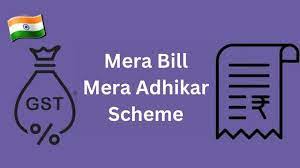
The Central Government is expected to launch its awaited ‘Mera Bill Mera Adhikar’ scheme soon.
- Mera Bill Mera Adhikar Scheme is a Goods and Services Tax (GST) invoice incentive programme that offers cash incentives for uploading invoices.
- It would initially be introduced in the states of Assam, Gujarat, and Haryana, as well as the UTs of Puducherry, Daman & Diu, and Dadra & Nagar Haveli.
- Objective is to encourage customers to request a bill whenever they make purchases.
- All invoices issued by GST-registered suppliers to consumers will be eligible for the scheme.
- A monthly and quarterly draw of lots will be made, and winners will be eligible for cash reward prizes beginning from Rs 10,000 to up to Rs 1 crore.
- The minimum purchase value for the invoice to be considered for the lucky draw is Rs 200, and individuals can upload a maximum of 25 invoices in a month.
- The ‘Mera Bill Mera Adhikar’ mobile app will be made available on both IOS and Android platforms.
- The invoice uploaded on the app should have the GSTIN of the seller, invoice number, amount paid and tax amount.
ASTRA Missile:

Tejas, Light Combat Aircraft (LCA) LSP-7 successfully fired the ASTRA off the coast of Goa on August 23, 2023.
- ASTRA Missile is an indigenous Beyond Visual Range (BVR) air-to-air missile
- It is to engage and destroy highly manoeuvring supersonic aerial targets.
- It is designed and developed by the Defence Research and Development Laboratory (DRDL), Research Centre Imarat (RCI) and other laboratories of DRDO.
- The indigenous Astra BVR firing from homegrown Tejas fighters is a major step towards ‘Aatmanirbhar Bharat’.
LCA Tejas:
- It is the lightest, smallest and tailless multi-role supersonic fighter aircraft in its class.
- This aircraft is designed to carry a range of air-to-air, air-to-surface, precision-guided weapons.
- It has the air-to-air refuelling capability.
- The maximum payload capacity of Tejas is 4000 kg.
- Speed: Mach 1.8.
Equal Contrast Technique (ECT):

Scientists developed a new methodology, called Equal Contrast Technique (ECT), to analyse Sun images in white light, which can help prevent temporal and latitudinal variations in observations related to instrument and sky conditions.
- It is known that there are large numbers of regions of weak magnetic field on the sun, which vary with time.
- These can be studied using magnetograms and Ca-K line images of the sun, as there is a strong correlation between the magnetic field and the Ca-K line intensity of the region on the Sun.
- The magneto-grams are available for short periods, and the characteristics of the instrument change with time.
- Ca-K line images have been available for a long period at Kodaikanal Observatory (KO), for more than 100 years, with no change in the optics of the instrument.
- Similarly, other observatories in the world, such as Mount Wilson Observatory (MWO) have had this type of data for about 70 years.
- Using the data obtained at Kodaikanal observatory, the scientists have shown that the correlation between derived plage area (the bright region in the sun’s chromosphere) from the Ca-K images and sunspot number is excellent, even on a daily basis, over a period of about 100 years for the first time.
- This type of accurate analysis of the historical time series of Ca-K images can be useful for reliable and accurate investigation of variations on the sun and the effect of this on the climatic condition of the earth.
- It helps in understanding the dynamics of the sun, solar cycle variations, dynamo processes in the convection zone and resulting long-term climatic variations on the earth.
Microsites Project:
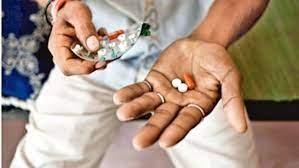
The National Health Authority (NHA) announced 100 Microsites projects for accelerated adoption of the Ayushman Bharat Digital Mission (ABDM) across the country
- Microsites project are defined geographical regions where focused outreach efforts would be made to onboard small and medium-scale private healthcare providers.
- Types of facilities to be covered under a Microsite:
- Private facilities such as standalone clinics, polyclinics, nursing homes, small hospitals (preferably <10 beds), labs, pharmacies, and any other healthcare facilities wherein health records are generated.
- Health Facilities and Health Professionals from all the systems of medicine.
- Any State/UT can choose to implement any of the following categories of Microsites as per the regional priorities.
- Category A Microsite: A microsite which consists of at least 1000 facilities, inclusive of all types of health facilities, as mentioned above
- Category B Microsite: A microsite that consists of at least 500 facilities but less than 1000 facilities, inclusive of all types of health facilities, as mentioned above.
- These Microsites would be majorly implemented by State Mission Directors of ABDM, while the financial resources and overall guidance would be provided by NHA.
- An interfacing agency under this program will have an on-ground team to reach out to the healthcare providers in the area.
- This team will spread awareness about the benefits of ABDM.
- It will help the service providers to join the core registries under ABDM, besides promoting the use of ABDM to enable digital solutions for regular clinical documentation.
Chandrayaan-3 Successfully Lands On Moon’s South Pole:
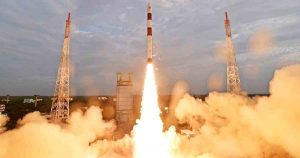
Chandrayaan-3 made history by becoming the first mission to soft-land on the lunar south pole, a region that has never been explored before.
- The mission aimed to demonstrate safe and soft lunar landing, rover mobility, and in-situ scientific experiments.
- India now joins the United States, Russia, and China as one of the few countries to successfully land on the Moon.
- Chandrayaan-3’s successful landing came after the setback of the Chandrayaan-2 mission’s landing failure in 2019.
- The Vikram lander of Chandrayaan-2 had lost control and communication during descent, leading to a crash on the lunar surface.
- Chandrayaan-3 is expected to operate for at least one lunar day (14 Earth days) on the lunar surface.
- The Pragyan rover will move around the landing site within a radius of 500 meters, conducting experiments and sending data and images to the lander.
- The Vikram lander will relay the data and images to the orbiter, which will then transmit them to Earth.
- Lander and Rover modules are collectively equipped with advanced scientific payloads.
- These instruments are designed to conduct comprehensive investigations into diverse facets of lunar characteristics, encompassing terrain analysis, mineralogical composition, surface chemistry, atmospheric attributes, and crucially, the exploration for water and potential resource reservoirs.
- The propulsion module that carried the lander and rover configuration till 100 km lunar orbit also has a Spectro-polarimetry of Habitable Planet Earth (SHAPE) payload to study the spectral and Polari metric measurements of Earth from the lunar orbit.
World Water Week : 20th To 24th August, 2023
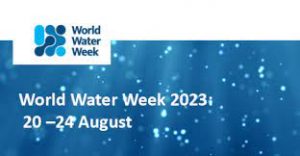
World Water Week, taking place from 20th to 24th August, 2023 is the yearly global water forum organized by Stockholm International Water Institute.
- This year’s theme, “Seeds of Change: Innovative Solutions for a Water-Wise World,” spotlights innovation in addressing current water challenges.
- In line, Jal Jeevan Mission, launched in 2019, is envisioned to provide safe and adequate drinking water through individual household tap connections by 2024 to all households in rural India.
- This ambitious initiative aims to learn from the shortcomings of past programs and rectify their failures.
- The mission allows for tapping into both surface water and groundwater, focusing on recharge and protection.
- The mission emphasizes sensitizing communities and implementing officers at all levels, encouraging active participation.
- A central dashboard publicly shares progress data, fostering healthy competition and encouraging action.
- The program encompasses disaster preparedness, bulk water transfers, technological interventions, and greywater management.
Jal Jeevan Mission:
- The goal of this mission is to provide 55 litres of water per person per day to every rural household through Functional Household Tap Connections (FHTC) by 2024.
- It comes under the Ministry of Jal Shakti.
Katchatheevu Island:
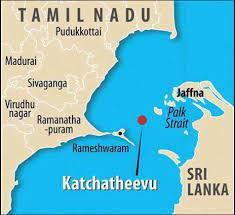
The Tamil Nadu Chief Minister revived the debate over the Katchatheevu, a longstanding point of contention between India and Sri Lanka, particularly with regard to fishing rights and sovereignty over the uninhabited island.
- Katchatheevu is a 285-acre uninhabited speck in the Palk Strait, between India and Sri Lanka, an island located about 14 nautical miles off Rameswaram,India.
- In 1974, Prime Ministers Indira Gandhi of India and Sirima R.D. Bandaranaike of Sri Lanka signed an agreement that recognized Katchatheevu as part of Sri Lanka’s territory, resulting in a change of ownership.
- The agreement also allowed Indian fishermen to fish around the island, dry their nets on it, and permitted Indian pilgrims to visit the Catholic shrine located on the island.
- Fisherfolk from both India and Sri Lanka have historically used Katchatheevu for fishing. Though this feature was acknowledged in the 1974 agreement, the supplemental pact was signed in 1976.
- The 1976 agreement was aimed at defining maritime boundaries and exclusive economic zones for both countries, while also imposing restrictions on fishing vessels and fishermen from either nation, prohibiting fishing in each other’s waters without explicit permission from either of the two countries.
- The Indian government, in 2013, stated that the question of retrieval did not arise as no Indian territory was ceded.
- The issue was framed as a dispute between British India and Ceylon (now Sri Lanka), resolved through agreements in 1974 and 1976.
- The Union government asserted that Katchatheevu lies on the Sri Lankan side of the India-Sri Lanka International Maritime Boundary Line.
Project Worldcoin:

A project called Worldcoin has been launched by OpenAI, an Artificial intelligence company. The project claims to be building the world’s largest identity and financial public network.
- Project Worldcoin is an initiative to create a digital network in which everyone can claim some kind of stake, and join the digital economy.
- The initiative uses a device called “Orb” to collect biometric (iris) data and help participants get a World ID through the World app.
- With the app, participants can collect a cryptocurrency called Worldcoin [WLD].
- Users need to be willing to scan irises and/or get their own irises scanned to make the Worldcoin network possible.
- Those who have their irises scanned and collect a World ID can use this to claim the WLD crypto, which they may use for transactions (if possible and legal) or hold on to the asset in the hope that its price might rise.
- Worldcoin claims that using biometric information to avoid duplication is a valid method for including everyone in its network.
- This process is called “proof of personhood” and makes sure that people do not sign themselves up multiple times in exchange for crypto.
Likaru-Mig La-Fukche Road : World’s New Highest Motorable
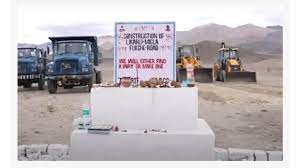
The construction of the world’s new highest motorable Likaru-Mig La-Fukche road began in Ladakh recently.
- The Border Roads Organization (BRO) is working on constructing the ‘Likaru-Mig La-Fukche’ road in Ladakh, which will be the new highest motorable road in the world.
- Likaru-Mig La-Fukche road is the highest motorable road in the world.
- It will surpass the Umling La Pass.
- Umling La Pass is located at an altitude of 19,300ft, is the highest motorable road in the world currently.
- It will connect Likaru to Fukche, situated 3 km from the Line of Actual Control (LAC).
Global Maritime India Summit 2023:
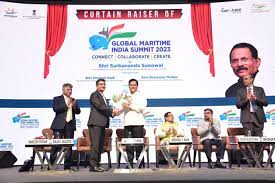
A roadshow was organized in Visakhapatnam as a run-up to the Global Maritime India Summit 2023(GIMS 2023).
- Visakhapatnam Port Authority (VPA) organized a roadshow in Visakhapatnam as part of a series of nationwide roadshows under the guidance and direction of the Ministry of Ports, Shipping & Waterways.
- It was organized to invite and attract clients and various stakeholders to actively participate in the three-day Global Maritime India Summit 2023 (GMIS) starting on October 17 in Delhi.
Global Maritime India Summit 2023 (GIMS 2023):-
- Ministry: Ministry of Ports, Shipping and Waterways.
- Event duration: 17th October-19th October 2023.
- Venue: Pragati Maidan, New Delhi.
- Organizers: Ministry of Ports, Shipping and Waterways, Indian Port Association, and Federation of Indian Chambers of Commerce and Industry (FICCI)
- IPA: constituted in 1966 under the Societies Registration Act, primarily with the idea of fostering the growth and development of all Major Ports.
- FICCI is s the largest and oldest apex business organization in India.
- It is an annual meeting of the Indian and international maritime community.
- Objective is to serve as a platform to showcase global best practices, foster investment partnerships, and chart a new and bright course for our collective future
- It is a flagship event aimed at propelling the Indian maritime economy by promoting global and regional partnerships and facilitating investments.
- It addresses key industry issues and exchanges ideas to bring the sector forward.
- The Federation of Indian Chambers of Commerce & Industry (FICCI) is the exclusive industry partner.
- It brings together global maritime players, policymakers and regulators, key opinion leaders, and industry leaders through a series of engaging dialogues, forums, and knowledge exchange platforms.
Maharaja Bir Bikram Manikya Bahadur:

Prime Minister Narendra Modi paid homage to Maharaja Bir Bikram Manikya Bahadur on his 115th birth anniversary.
- Maharaja Bir Bikram Manikya Bahadur : Birth: August 19, 1908.
- Dynasty: Maniyaka
- He was the last King of Tripura.
- He was a prominent royal figure who played a pivotal role in the modernization and development of the princely state of Tripura.
- His reign marked a transformative period in Tripura’s history, characterized by progressive reforms and visionary initiatives.
- He is popularly known as the Architect of Tripura due to his contribution to educational institutions.
- He established the Maharaja Bir Bikram College (MBB College) in Agartala, Tripura.
- Under his leadership, significant infrastructure projects were undertaken.
- Road networks, bridges, and public buildings were constructed to enhance connectivity and elevate living standards across the state.
- He built Tripura’s first airport at Agartala.
- He also set up one of the country’s first municipalities.
- He initiated land reforms, reserving vast tracks of land for Tripura’s tribal
- He established hospitals and medical facilities, ensuring accessible and quality medical services for the people of Tripura.
Pfizer’s RSV Vaccine:
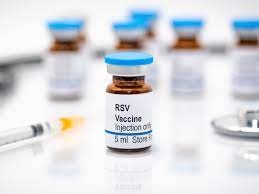
The Food and Drug Administration (FDA) has granted approval to Pfizer’s vaccine, Abrysvo, aimed at safeguarding new-borns from respiratory syncytial virus (RSV) by vaccinating pregnant individuals during the latter stages of pregnancy.
- Abrysvo has been authorized for use in adults aged 60 and above to protect them from RSV.
- The vaccine generates passive immunity by producing antibodies against RSV in pregnant individuals, which are then passed on to their foetuses in the uterus.
- Abrysvo’s approval is based on its demonstrated effectiveness in reducing the risk of severe lower respiratory tract disease caused by RSV in new-borns.
- However, concerns have been raised about potential preterm births in response to the vaccine, similar to issues seen with another competitor vaccine.
Respiratory syncytial virus (RSV) infection:
- Respiratory syncytial virus (RSV) infection is a common respiratory illness that primarily affects infants, young children, and older adults.
- RSV belongs to the family of viruses called Paramyxoviridae and is a leading cause of lower respiratory tract infections, such as bronchiolitis and pneumonia, especially in children under the age of two.
- The virus spreads through respiratory droplets when an infected person coughs or sneezes, and it can also be transmitted through direct contact with contaminated surfaces.
Dr. Calyampudi Radhakrishna Rao: Statistician
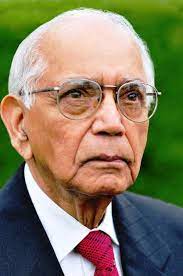
Dr. Calyampudi Radhakrishna Rao, the world-renowned statistician who pioneered several fundamental statistical concepts, passed away at the age of 102 (22th August 2023).
- C.R. Rao was born on September 10, 1920, in Bellary district, Karnataka in a Telugu family.
- He pioneered several fundamental statistical concepts such as the Cramer–Rao inequality and Rao–Blackwellization.
- Cramer-Rao lower bound, provides a means for knowing when a method for estimating a quantity is as good as any method.
- Rao–Blackwellization provides a means for transforming an estimate into a better—in fact, an optimal—estimate. Together, these results form a foundation on which much of statistics is built.
- The Rao-Blackwell process has been applied to stereology, particle filtering, and computational econometrics, among others, while the Cramer-Rao lower bound is of great importance in such diverse fields as signal processing, spectroscopy, radar systems, multiple image radiography, risk analysis, and quantum physics.
- Dr. Rao was awarded India’s highest honours the Padma Bhushan and Padma Vibhushan in 1969 and 2001, respectively.




